About Antarctica: Weather Conditions
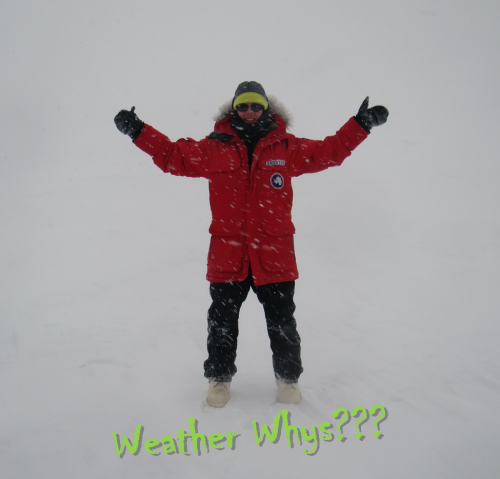 Are you interested in the weather? Photo courtesy of Alex Eilers.
Are you interested in the weather? Photo courtesy of Alex Eilers.
This journal is brought to you by…
- Charles Powell Community Center
- Mrs. N.P. Jackson, Dr. Tarcia Gilliam Parrish, and Mr. Sweeten’s 6-8th grade students at Southside Middle
- Ms. Allen and Ms. Williams’ 3rd grade students at Germantown Elementary
- Ms. Allen and Ms. Dacus’ 3rd grade students at Germantown Elementary
- Mr. Loebach, Ms. Quesse’s and Ms. Jagiella’s classes at Peru Catholic Junior High in Peru, Illinois
- Mrs. Fleming’s 3rd grade students at Richland Elementary
- A.J. Stewart in 1st grade at Crosswind Elementary
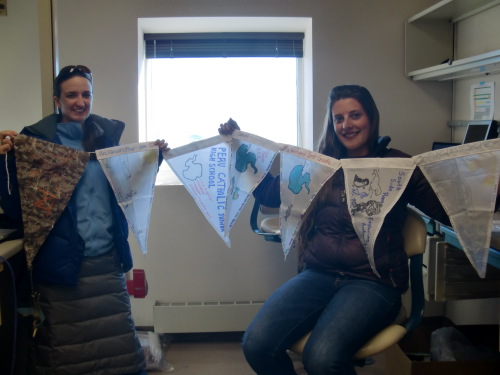 Weather conditions had us in the lab today. Michelle and Roxanne holding up the weather condition flags. Photo credit: Alex Eilers.
Weather conditions had us in the lab today. Michelle and Roxanne holding up the weather condition flags. Photo credit: Alex Eilers.
Well…I was planning to post this journal later in the expedition but something came up – the weather. You have to roll with the punches around here. Yesterday was a beautiful day and we worked with two seals; today we are in the lab. Here’s why. Take a look at the forecast below. Brrrr!
Pay special attention to the icons. The ‘partly cloudy’ icon seems pretty straight forward and easy to understand but I’m still trying to figure out what the penguin icon stands for. Any thoughts? If so, send them to me at ‘Ask the Team.’
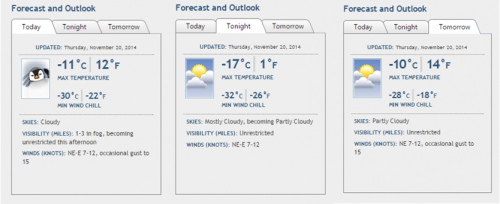 Forecast for today and tomorrow. Looks mighty cold!
Forecast for today and tomorrow. Looks mighty cold!
This morning, as we were preparing to head to the field, the wind chill at our field site was at - 56° C. As you can imaging, we didn’t go out. So the weather today inspired me to talk about Antarctic weather conditions, and weather here is serious stuff! Some of the coldest temperatures and highest winds on Earth were recorded in Antarctica. If we aren’t careful, we could get stuck in a storm, lost because of poor visibility, etc. So safety is always a priority! And everything depends on the weather – travel, scientific expeditions, even rescue missions. To make sure everyone remains safe, weather conditions are classified into three different groups.
- Condition 3
- Condition 2
- Condition 1
Let’s take a closer look at each one!
Condition 3
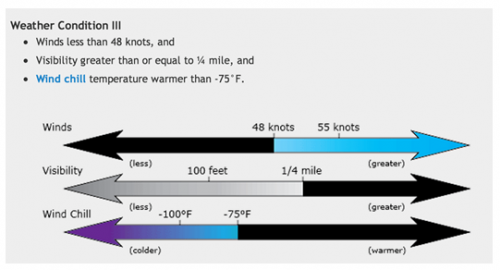 Condition 3 chart. Credit: Richard Jeong at blog.wonderfullyrich.net.
Condition 3 chart. Credit: Richard Jeong at blog.wonderfullyrich.net.
Clear skies, ‘warm’ temperatures and barely a cloud in the sky! It may not be a day at the beach, but this is the best weather in Antarctica. Wind speed is below 48 knots, the visibility is good and the wind chill is above -75°F. In Condition 3 weather, all outside travel is permitted.
Even as cold as it was today, we were still in condition 3.
Condition 2
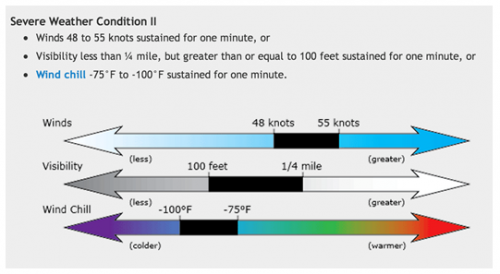 Condition 2 chart. Credit: Richard Jeong at blog.wonderfullyrich.net.
Condition 2 chart. Credit: Richard Jeong at blog.wonderfullyrich.net.
This is when things start to get dangerous. Outside travel is permitted, but it’s not recommended. The wind speed is between 48 to 55 knots, the visibility is poor and the wind chill is between -76°F and -100°F. Brrrr! Going out in this weather is pretty risky, so our research team will stay indoors during Condition 2. That’s OK – just like today, there’s always work to be done in the lab!
Condition 1
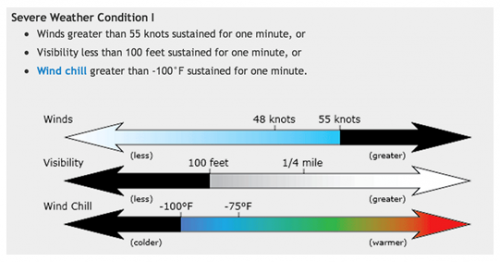 Condition 1 chart. Credit: Richard Jeong at blog.wonderfullyrich.net.
Condition 1 chart. Credit: Richard Jeong at blog.wonderfullyrich.net.
Watch out! This is some nasty weather! No outside travel is permitted during Condition 1. Not even to the lab! Wind speeds can reach over 55 knots, visibility is less than 100 feet and the wind chill is -100°F or below. Yikes! That’s cold! Even if we were allowed out, I think I’d rather stay inside!
We’ve been lucky so far – no condition 1 weather.
Fun Antarctica weather stats
The lowest temperature ever measured was in Antarctica. No surprise there! It was -128.6°F in 1983. That’s really cold! Even colder Antarctic temperatures have been recorded from space satellites.
The highest temperature ever recorded is pretty surprising: 59°F in 1974. That’s like a spring day back in Memphis!
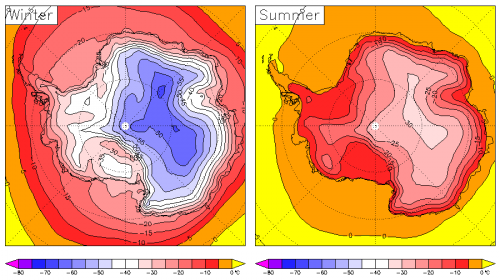 Antarctica surface temperature map//It’s always cold in Antarctica, but there is still a big difference between summer and winter. Photo credit: European Center for Medium-Range Weather Forecasts
Antarctica surface temperature map//It’s always cold in Antarctica, but there is still a big difference between summer and winter. Photo credit: European Center for Medium-Range Weather Forecasts
Photo credit: European Center for Medium-Range Weather Forecasts Credit: European Center for Medium-Range Weather Forecasts
Antarctica is also the windiest continent, and these winds are pretty unusual. One type is called katabatic winds, and they are caused by Antarctica’s geography. We’ll talk more about katabatic winds later!


Comments